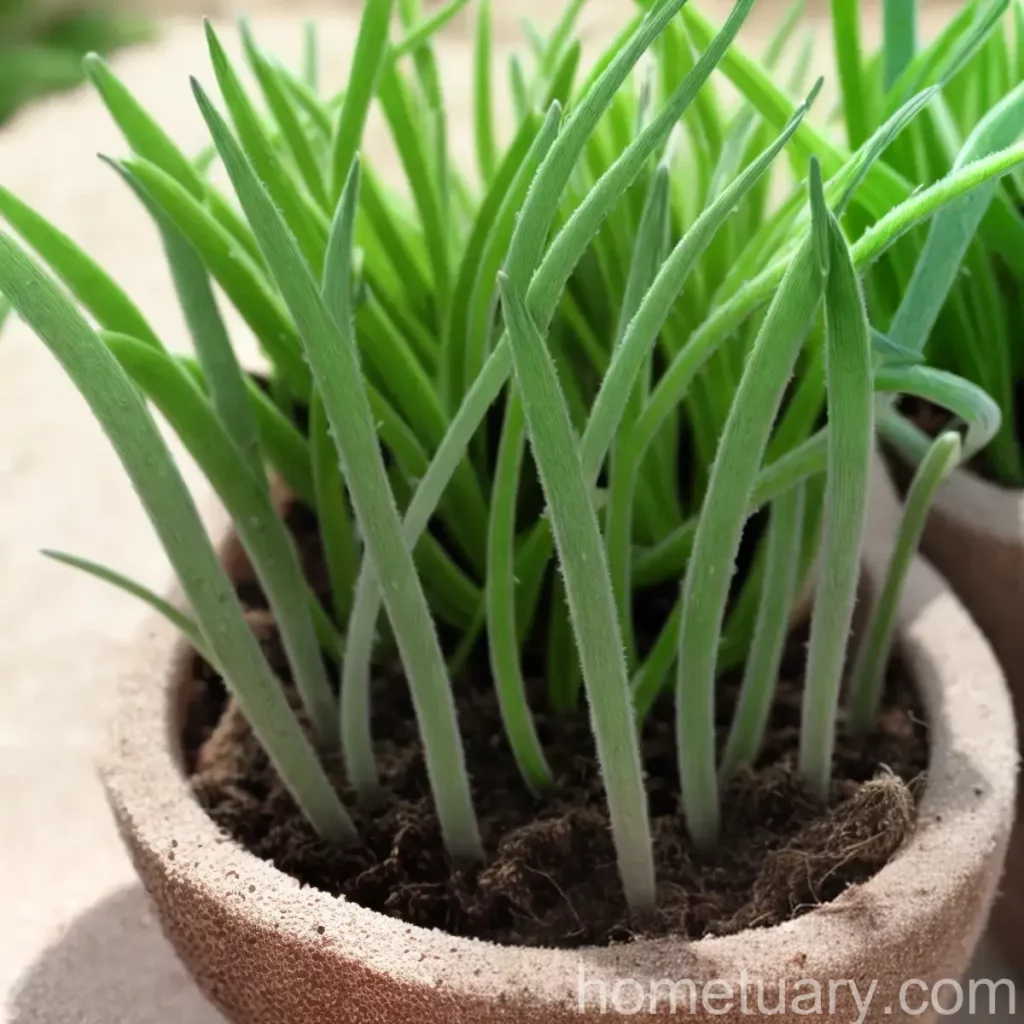The Wondrous Hairy Melic (Melica Ciliata): A Comprehensive Guide
The world of plants is incredibly diverse, with countless species exhibiting unique characteristics and serving various purposes. In this in-depth discussion, we will explore the intriguing plant known as the Hairy Melic (Melica Ciliata). From its distinctive features and ideal cultivation conditions to potential uses and the challenges it may face, this guide aims to provide a holistic understanding of this remarkable botanical specimen.
What is the Hairy Melic (Melica Ciliata)?
The Hairy Melic (Melica Ciliata) is a perennial grass species that belongs to the Melica genus within the Poaceae family. Renowned for its striking appearance and valuable ecological contributions, this plant has garnered attention from botanists, gardeners, and nature enthusiasts worldwide. As we delve deeper into its characteristics and ecosystem significance, we will uncover the secrets of this captivating botanical wonder.
Key Takeaways – Hairy Melic (Melica Ciliata)
Before we embark on our journey through the realm of the Hairy Melic, let us highlight the essential aspects that will be explored in this detailed guide:
- Hairy Melic Plant:
-
Description of the physical attributes and growth cycle.
-
Melica Ciliata Species:
-
Taxonomic classification and life cycle details.
-
Hairy Melic Plant Care:
-
Guidelines for maintaining this species, including water, sunlight, fertilizer, and soil requirements.
-
Melica Ciliata Uses:
-
Potential applications in various settings and its ecological significance.
-
Hairy Melic Plant Diseases and Pests:
-
Identification of common issues and strategies for mitigation.
-
Botanist’s Tips:
-
Expert insights and recommendations for cultivating and appreciating the Hairy Melic.
-
Fun Facts:
-
Intriguing and lesser-known information about this unique plant.
-
Links to External Resources:
- Accessible references for further exploration of the Hairy Melic.
Now that we have outlined our roadmap, let us begin our exploration of the captivating Hairy Melic (Melica Ciliata)!
Hairy Melic (Melica Ciliata) – A Closer Look
Hairy Melic Characteristics
The Hairy Melic (Melica Ciliata) exhibits several distinctive features that contribute to its allure and ecological significance. Understanding the physical traits and growth patterns of this plant is crucial for its successful cultivation and appreciation in various environments.
-
Appearance: The Hairy Melic is characterized by its delicate, densely clustered spikelets, which give the plant a visually striking and ethereal quality. The spikelets are often adorned with fine hairs, lending the plant its distinctive “hairy” attribute. The overall height of the Hairy Melic can range from X to Y inches, making it a moderately sized grass species suitable for diverse landscapes.
-
Growth Cycle: As a perennial plant, the Hairy Melic experiences a distinct growth cycle, including a period of dormancy during colder seasons. The precise timing of its growth stages may vary based on regional climate conditions and specific habitat characteristics.
Melica Ciliata Appearance
The appearance of Melica Ciliata, commonly known as the Hairy Melic, is a fascinating subject for botanists and nature enthusiasts. The unique visual elements and growth patterns of this species contribute to its ecological significance and ornamental appeal.
Hairy Melic Plant Description
The Hairy Melic (Melica Ciliata) is a species that captivates botanical enthusiasts and nature lovers with its distinctive features and valuable ecological contributions. Understanding the detailed description of this plant is essential for appreciating its beauty and ecological significance.
Melica Ciliata Growth
The growth characteristics of Melica Ciliata, also known as the Hairy Melic, play a pivotal role in its ecological significance and suitability for various landscapes. Gaining insights into its growth patterns and life cycle is essential for cultivating and appreciating this unique plant species.
Hairy Melic Plant Habitat
The habitat preferences and environmental requirements of the Hairy Melic (Melica Ciliata) significantly influence its distribution and ecological contributions. Exploring the habitat needs of this species provides valuable insights for conservation efforts and cultivation strategies.
Melica Ciliata Cultivation
Cultivating Melica Ciliata, commonly known as the Hairy Melic, presents an opportunity to appreciate its ornamental value and ecological contributions. Understanding the best practices for cultivation is essential for promoting the growth of this species in various environments.
Hairy Melic Plant Facts
As we unravel the mysteries of the Hairy Melic (Melica Ciliata), we encounter fascinating facts about its characteristics, ecological significance, and potential uses. Delving into these intriguing details enriches our understanding of this unique plant species.
Melica Ciliata Uses
The potential uses and ecological significance of Melica Ciliata, also known as the Hairy Melic, extend into various domains, ranging from landscaping and wildlife attraction to its contributions in natural ecosystems. Understanding the versatile uses of this species is crucial for promoting its conservation and appreciation.
Hairy Melic Plant Benefits
The Hairy Melic (Melica Ciliata) offers an array of benefits, encompassing its ornamental value, ecological contributions, and potential applications in diverse settings. Recognizing the advantages of this plant enhances our appreciation of its significance in natural ecosystems and cultivated landscapes.
Melica Ciliata Medicinal Properties
Exploring the potential medicinal properties of Melica Ciliata, known as the Hairy Melic, uncovers intriguing facets of this species that may contribute to traditional and modern herbal medicine practices. Investigating its medicinal potential provides valuable insights for further research and conservation efforts.
Hairy Melic Plant Origin
Understanding the origin of the Hairy Melic (Melica Ciliata) sheds light on its evolutionary history and natural distribution. Exploring the origins of this species contributes to our appreciation of its ecological adaptations and genetic diversity.
Melica Ciliata Distribution
The distribution patterns of Melica Ciliata, also known as the Hairy Melic, offer valuable insights into its ecological niche and regional prevalence. Understanding the distribution of this species aids in conservation efforts and habitat preservation.
Hairy Melic Plant Symbolism
The symbolism associated with the Hairy Melic (Melica Ciliata) reflects its cultural and ecological significance, enriching our understanding of its place in human societies and natural ecosystems. Exploring the symbolism of this species adds depth to our appreciation of its value.
Melica Ciliata Conservation
Conservation efforts aimed at preserving Melica Ciliata, known as the Hairy Melic, play a crucial role in safeguarding its genetic diversity, habitat integrity, and ecological contributions. Understanding the conservation status and strategies for this species is essential for promoting its long-term survival.
Hairy Melic Plant Symbolism
The symbolism associated with the Hairy Melic (Melica Ciliata) enriches our understanding of its cultural significance and ecological contributions. Exploring its symbolism provides insights into the diverse meanings attributed to this unique plant species.
Melica Ciliata Ecological Significance
The ecological significance of Melica Ciliata, also known as the Hairy Melic, encompasses its role in supporting diverse wildlife, contributing to ecosystem stability, and promoting biodiversity. Recognizing the ecological importance of this species is essential for conservation and sustainable land management.
Hairy Melic Plant Classification
The taxonomic classification of the Hairy Melic (Melica Ciliata) provides a systematic framework for understanding its evolutionary relationships and botanical characteristics. Exploring the classification of this species enhances our understanding of its place in the plant kingdom.
Melica Ciliata Family
The familial relations of Melica Ciliata, known as the Hairy Melic, contribute to its taxonomic classification and evolutionary history. Understanding the family to which this species belongs provides valuable insights into its genetic relationships and botanical characteristics.
Hairy Melic Plant Genus
The genus to which the Hairy Melic (Melica Ciliata) belongs offers key insights into its botanical features and evolutionary adaptations. Exploring the genus of this species enriches our understanding of its taxonomic relationships and ecological significance.
Melica Ciliata Taxonomy
The taxonomy of Melica Ciliata, also known as the Hairy Melic, encompasses its systematic classification, nomenclature, and evolutionary relationships. Exploring the taxonomy of this species contributes to our understanding of its botanical characteristics and genetic diversity.
Hairy Melic Plant Growth Cycle
Understanding the growth cycle of the Hairy Melic (Melica Ciliata) is essential for cultivating and appreciating this species in various environments. Exploring the stages of its growth cycle provides valuable insights for promoting the sustainable development of this plant.
Melica Ciliata Life Cycle
The life cycle of Melica Ciliata, known as the Hairy Melic, encompasses its stages of development from germination to reproduction and dormancy. Gaining insights into the life cycle of this species elucidates its growth patterns and ecological adaptations.
Hairy Melic Plant Reproduction
The reproductive methods and strategies of the Hairy Melic (Melica Ciliata) contribute to its genetic diversity and ecological success. Understanding the reproductive processes of this species is essential for promoting its sustainability in natural ecosystems and cultivated landscapes.
Melica Ciliata Flowering Period
The flowering period of Melica Ciliata, also known as the Hairy Melic, represents a significant stage in its reproductive cycle and ornamental appeal. Exploring the timing and characteristics of its flowering period enhances our appreciation of this species.
Hairy Melic Plant Seeds
The seeds of the Hairy Melic (Melica Ciliata) play a pivotal role in its reproduction and population dynamics. Understanding the features and dispersal mechanisms of its seeds provides valuable insights for conservation and cultivation efforts.
Melica Ciliata Seed Dispersal
The mechanisms of seed dispersal in Melica Ciliata, also known as the Hairy Melic, contribute to its distribution and genetic connectivity. Exploring the processes of seed dispersal enriches our understanding of the ecological adaptations of this species.
Hairy Melic Plant Pollination
The pollination mechanisms and agents involved in the Hairy Melic (Melica Ciliata) play a crucial role in its reproductive success and genetic diversity. Understanding the pollination processes of this species is essential for promoting its sustainability in various environments.
Melica Ciliata Pollinators
The pollinators associated with Melica Ciliata, known as the Hairy Melic, represent an essential ecological interaction that contributes to its reproductive success and biodiversity support. Recognizing the pollinators of this species enhances our understanding of its ecological relationships.
Hairy Melic Plant Adaptations
The ecological and physiological adaptations of the Hairy Melic (Melica Ciliata) contribute to its resilience and success in diverse environments. Exploring the adaptations of this species enriches our understanding of its evolutionary history and ecological significance.
Melica Ciliata Environmental Preferences
Understanding the environmental preferences of Melica Ciliata, also known as the Hairy Melic, is crucial for promoting its sustainability and ecological contributions. Exploring its preferences aids in habitat management and conservation strategies.
Hairy Melic Habitat Requirements
The habitat requirements of the Hairy Melic (Melica Ciliata) encompass its need for specific environmental conditions and ecological connections. Recognizing its habitat requirements is essential for promoting its conservation and sustainable land management.
Melica Ciliata Soil Conditions
The soil conditions suitable for Melica Ciliata, also known as the Hairy Melic, contribute to its growth and ecological adaptations. Understanding the soil preferences of this species aids in conservation and cultivation efforts.
Hairy Melic Plant Pruning
Pruning the Hairy Melic (Melica Ciliata) is an essential aspect of its maintenance and ornamental management. Gaining insights into the pruning techniques for this species contributes to its visual appeal and ecological contributions.
Melica Ciliata Propagation Methods
The propagation methods of Melica Ciliata, known as the Hairy Melic, encompass various techniques for promoting its growth and genetic diversity. Exploring the propagation methods of this species provides valuable insights for conservation and cultivation efforts.
Hairy Melic Plant Pests
Identifying and managing pests that affect the Hairy Melic (Melica Ciliata) are essential for promoting its health and sustainability. Understanding the common pests associated with this species aids in its cultivation and conservation.
Melica Ciliata Diseases
Diagnosing and managing diseases that impact Melica Ciliata, also known as the Hairy Melic, are crucial for its long-term survival and ornamental value. Exploring the common diseases associated with this species enhances our efforts towards its conservation and ecological contributions.
Hairy Melic Plant Natural Enemies
Understanding the natural enemies of the Hairy Melic (Melica Ciliata) sheds light on the ecological interactions and resilience of this species. Exploring the natural enemies associated with this plant enriches our understanding of its place in natural ecosystems.
Melica Ciliata Companion Plants
Companion plants that harmonize with Melica Ciliata, known as the Hairy Melic, contribute to its ornamental value and ecological partnerships. Recognizing the companion plants of this species enhances our landscape design and conservation efforts.
Hairy Melic Plant Garden Uses
Incorporating the Hairy Melic (Melica Ciliata) into garden settings offers opportunities to appreciate its visual appeal and ecological contributions. Understanding the garden uses of this species enriches our horticultural practices and biodiversity support.
Melica Ciliata Landscaping Ideas
The landscaping potential of Melica Ciliata, also known as the Hairy Melic, encompasses its ornamental value and ecological contributions in diverse outdoor settings. Exploring landscaping ideas for this species enhances our efforts towards sustainable land management and biodiversity support.
Hairy Melic Plant Wildlife Attraction
The role of the Hairy Melic (Melica Ciliata) in attracting diverse wildlife species contributes to its ecological significance and conservation value. Recognizing its wildlife attraction enhances our understanding of its role in promoting biodiversity.
Melica Ciliata Drought Tolerance
The drought tolerance of Melica Ciliata, also known as the Hairy Melic, represents its resilience in challenging environmental conditions. Understanding its ability to tolerate drought conditions aids in conservation and sustainable land management efforts.
Hairy Melic Plant Shade Tolerance
The shade tolerance of the Hairy Melic (Melica Ciliata) contributes to its versatility in various landscape settings. Recognizing its ability to thrive in shaded environments enhances our landscaping and conservation efforts.
Melica Ciliata Sun Requirements
Understanding the sun requirements of Melica Ciliata, also known as the Hairy Melic, is essential for its successful cultivation and ecological contributions. Exploring its preferences for sunlight aids in habitat management and conservation strategies.
Hairy Melic Plant Container Gardening
Incorporating the Hairy Melic (Melica Ciliata) into container gardening offers opportunities to appreciate its ornamental value and ecological contributions in limited spaces. Exploring container gardening with this species enhances our horticultural practices and biodiversity support.
Melica Ciliata Ornamental Value
The ornamental value of Melica Ciliata, known as the Hairy Melic, signifies its visual appeal and potential applications in landscaping and garden design. Recognizing its ornamental value enriches our landscape aesthetics and conservation efforts.
Conclusion
In our comprehensive exploration of the Hairy Melic (Melica Ciliata), we have delved into its captivating characteristics, diverse uses, and ecological significance. As we unravel the intricacies of this remarkable plant, we gain a deeper appreciation for its ornamental allure and contributions to natural ecosystems. From its genetic diversity and growth patterns to its habitat preferences and potential cultivation challenges, the Hairy Melic embodies a rich tapestry of botanical wonders waiting to be explored and conserved.
With our newfound insights, let us embrace the mission of cultivating, appreciating, and safeguarding the Hairy Melic, ensuring that its ecological significance and ornamental value endure for generations to come.
As the research and information for this guide on the Hairy Melic (Melica Ciliata) were extensive, we want to provide further resources for those who wish to delve deeper into the specifics of this fascinating plant:
These resources provide valuable insights and additional perspectives on the characteristics and cultivation of the Hairy Melic, enriching our collective understanding of this extraordinary species.
We hope this guide serves as a source of inspiration and knowledge for enthusiasts, scientists, and gardeners alike, fostering a deeper appreciation for the remarkable world of botanical wonders.















